6 types of cat brushes and how to use them
From slicker to bristle and everything in between, these common types of cat brushes contain models to suit every moggy's mane
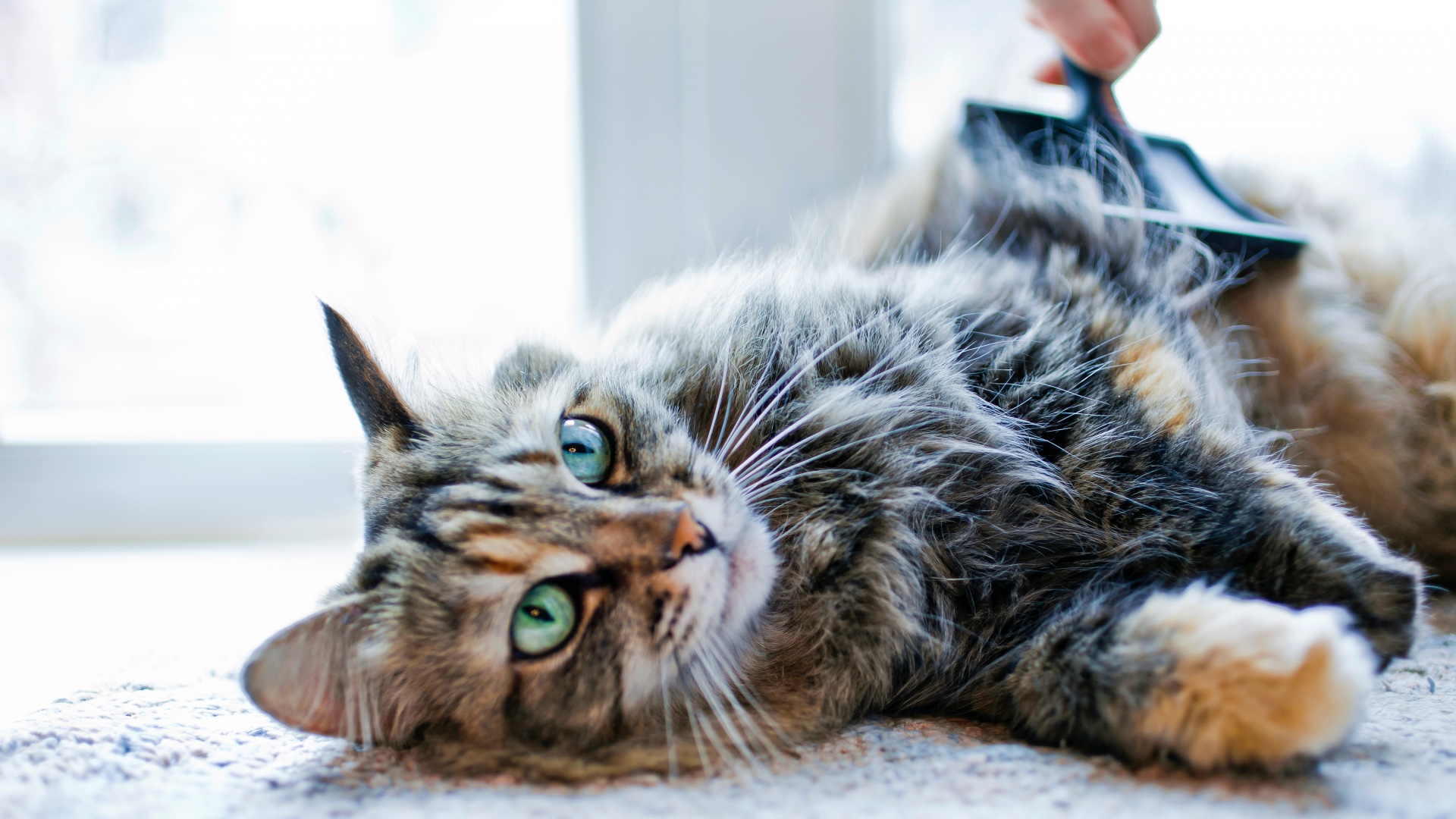
Have you ever found yourself feeling overwhelmed by the many different types of cat brushes available on the market? If so, you’re not alone. Sometimes it seems like there are as many varieties of brushes as there are cats in the world, which can make it difficult as a pet parent to know which ones to use, let alone how to use them!
The good news is that the best cat brushes tend to fall into six categories, with each one serving a particular purpose. You’ll find some brushes ideal for short-haired breeds, while others will make grooming a long-haired kitty that much easier.
In this piece, we’re breaking down the most common and popular types of cat brushes as well as talking you through how to use each one. And if you’re in need of more tips to help keep your kitty’s skin and fur in purr-fect health, check out our guide to brushing cats, which contains everything you need to know.
1. Slicker brush
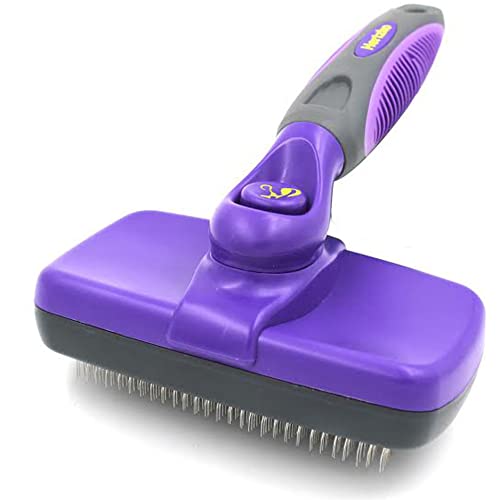
Slicker brushes have a flat or slightly curved head containing lots of fine, pin-like metal teeth that are placed close together. A slicker brush makes a great addition to any grooming kit regardless of what kind of cat breed you have, but they’re particularly useful for kitties with medium to long hair who shed a lot.
A slicker is ideal for removing dead and loose hair from the top coat and the teeth can penetrate deep to work out tangles, knots and mats as well as stimulating the natural oils to increase the shine in your cat’s coat. Just be mindful that the teeth on slicker brushes can be sharp, so always groom gently.
When you’re using a slicker brush, you want to make sure you’re brushing from the neck to the tail with long, slow, gentle strokes. If you hit any knots or tangles, try to carefully loosen these with your fingers or switch to a comb to remove them before continuing on with the slicker brush. Repeat the process making sure to cover the back, body, legs and neck but avoiding the face.
2. Bristle brush
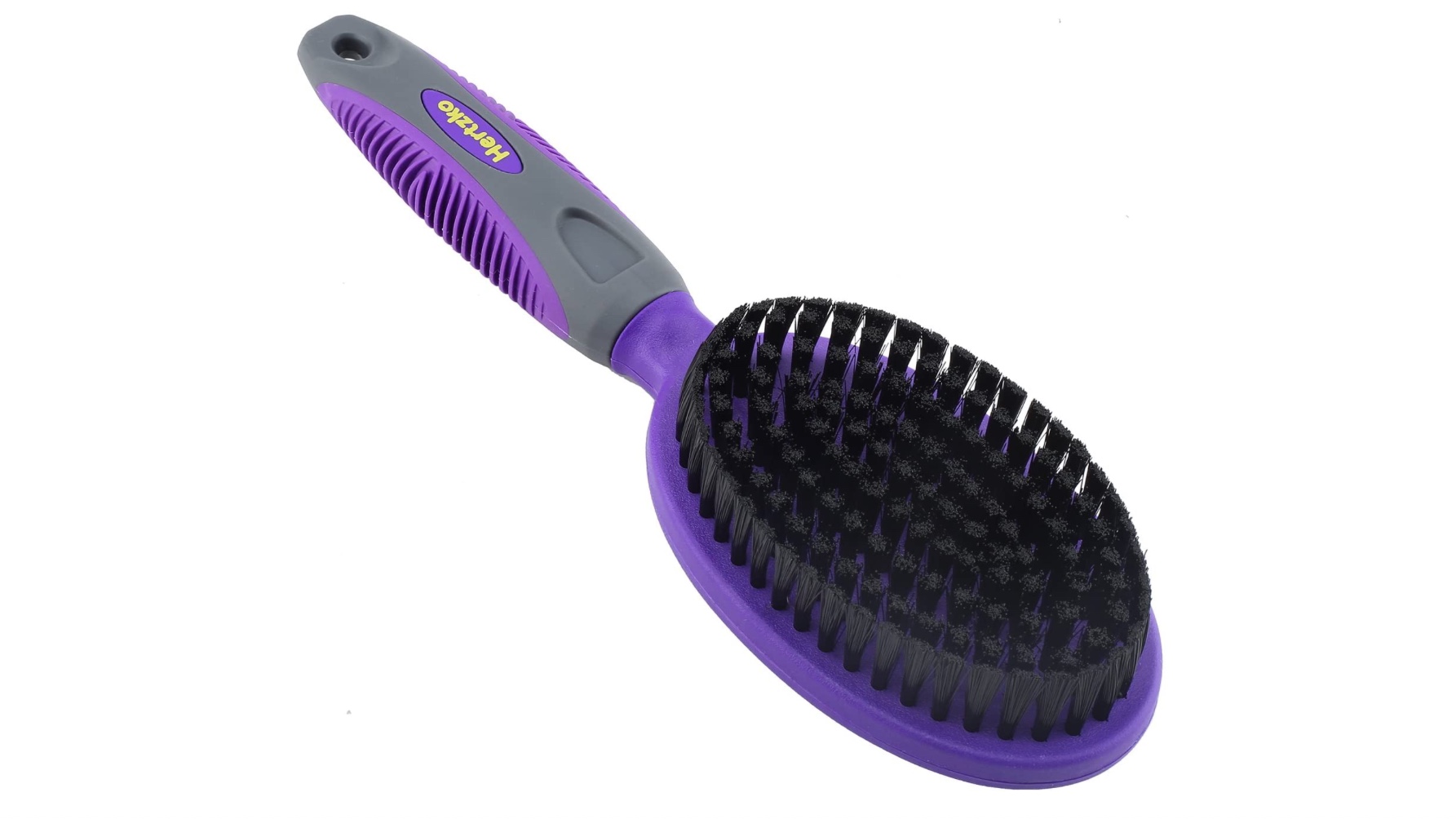
A bristle brush is a great all-rounder that works beautifully on all coat types, although the way you use it will depend on the breed of cat that you have. For short-haired kitties, a bristle brush will likely be enough to get the grooming job done, whereas a bristle brush is best used as a finishing brush on long-haired breeds to leave the coat silky and shiny.
You’ll find a variety of bristle brushes available, each varying in size, shape and the toughness of the bristles. If you’re going to be using a bristle brush on a short-haired cat, go for bristles that are tightly packed. For longer-haired breeds, you’ll want longer bristles that are spaced further apart to allow them to penetrate the coat.
In terms of bristle toughness, soft bristles tend to be well tolerated by even the most grooming-averse cat and they have a nice massaging effect, which can be soothing. Try experimenting with a few different kinds of bristle brush and see which one your kitty prefers.
Just like with a slicker brush, you want to make sure you’re brushing the hair in the direction that it grows, moving down the body with long strokes. Short-haired cats are fairly straightforward, but for longer-haired breeds you might like to separate the hair into sections to make it easier to work with.
3. Pin brush
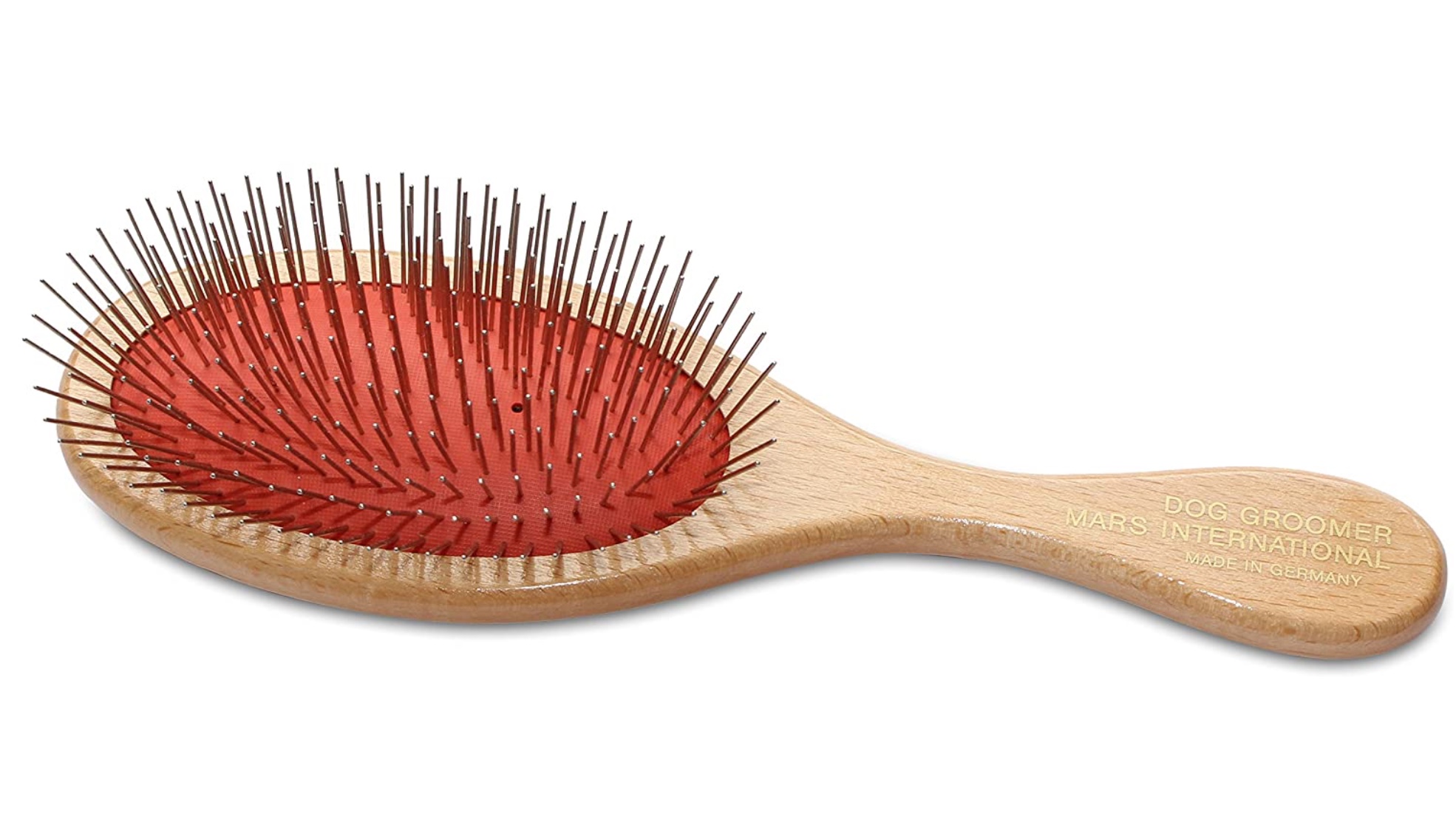
Another widely available choice is a pin brush, which, as you’ve probably guessed from the name, contains lots of pins! This type of brush is best suited to medium to long-haired breeds and those that have curly or woolly coats as the pins penetrate down deeply to remove knots and tangles and to prevent matting.
Pin brushes usually come with a protective ball at the end of each pin, which means you don’t have to worry about hurting your kitty when you’re brushing them and these balls also do a good job of stimulating the natural oils, adding a nice shine to the coat.
4. Double-sided brush
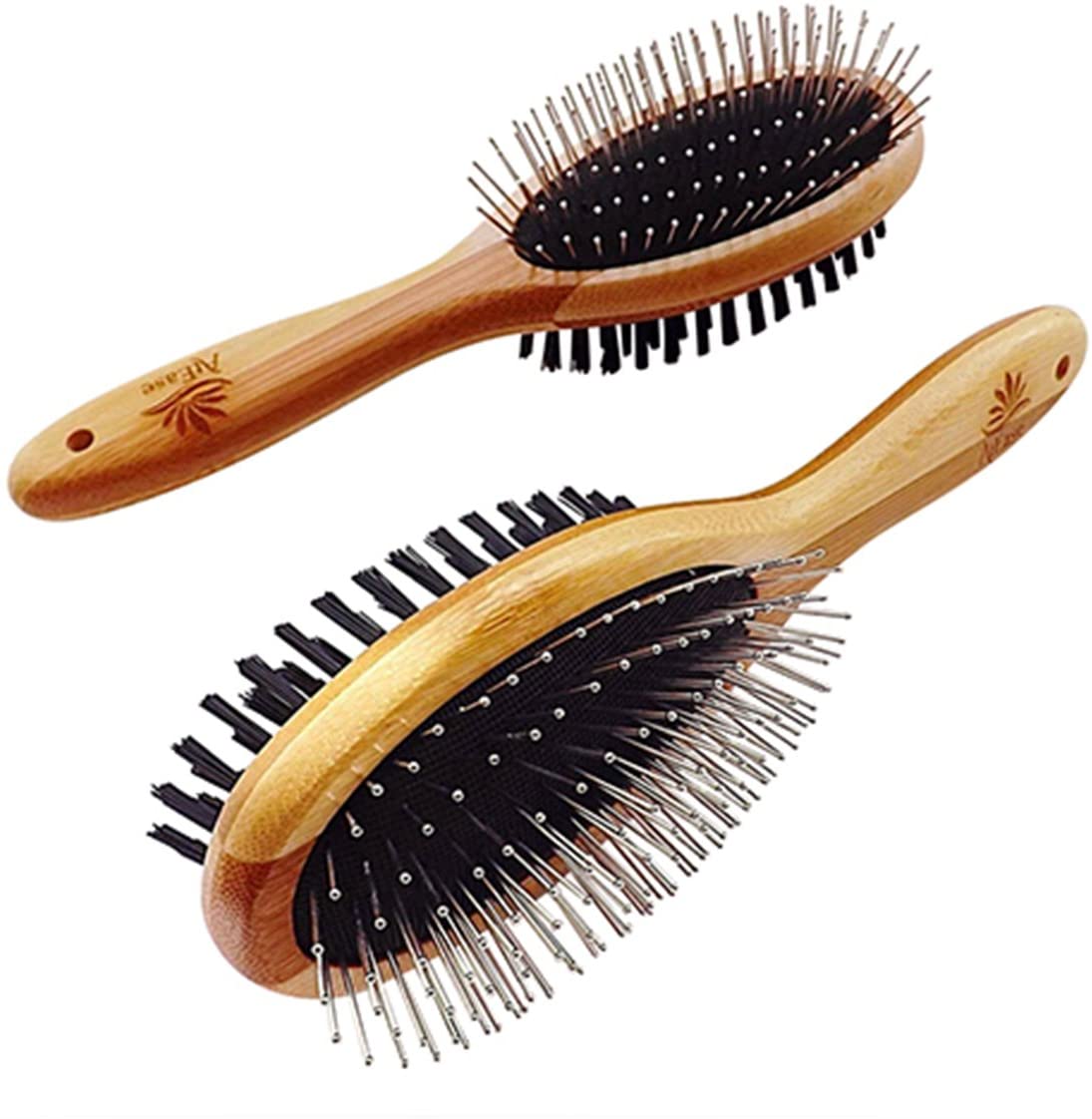
Double-sided brushes give you the best of both worlds, with a bristle brush on one side and a pin brush on the other. These two brushes work beautifully together and can be used on all sorts of coat types.
When using a dual-sided brush, start with the pin side first and use this to untangle any large clumps of hair. The pins work great for detangling and then once you’ve done that you can swap over to the bristle side to remove excess hair, smooth the coat and add shine.
5. Rubber or silicone brush
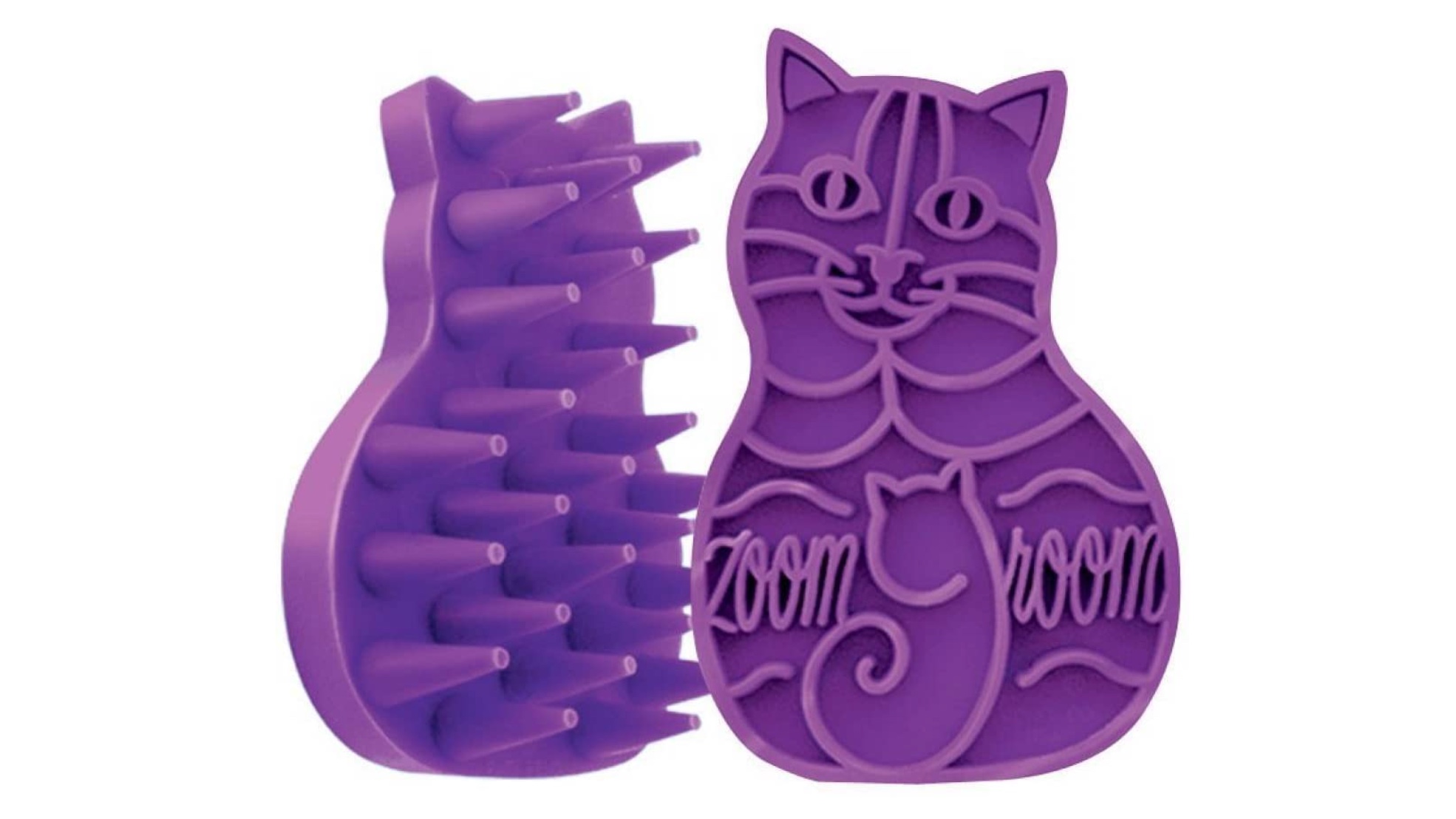
If your cat is new to being groomed or isn’t a fan of a standard brush, then rubber or silicone can be a real winner when it comes to making them feel comfortable and relaxed.
Rubber and silicone brushes have wide and chunky bristles with blunt ends which make them ideal for kitties with sensitive skin. They also do a great job of removing loose hair on all breeds, but they’re not suitable for tying to remove knots or tangles.
Almost all cats love the feel of rubber and silicone brushes which give a gentle massaging effect and promote blood flow for a healthy coat by stimulating the capillaries.
With a rubber or silicone brush you can brush in the direction of your cat’s hair growth or use it to massage the coat using circular motions. These brushes are gentle enough that going against the growth won’t cause the discomfort that other brushes can cause.
6. Grooming glove
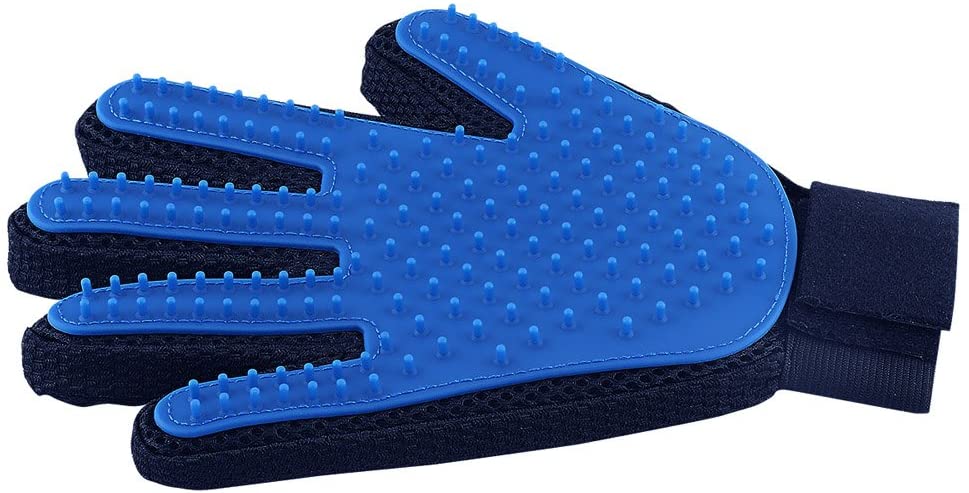
It might not look like your typical brush, but a grooming glove still works in much the same way with the glove having soft rubber or silicone bristles attached to one side. Again, this is a really good choice if you’re looking to introduce your cat to being groomed or have a kitty who’s wary of standard brushes, they’re also great at reducing shedding in longer-haired breeds.
A grooming glove is nice and easy to use, simply pop it on your hand and pet your cat in exactly the same way you normally would. The bristles will collect all the loose hair and then you can just pull it all off and dispose of it into the bin.
If you want to find a way to relax your feline, why not learn how to give a cat a spa day?
PetsRadar Newsletter
Get the best advice, tips and top tech for your beloved Pets

Kathryn is a freelance writer who has been a member of the PetsRadar family since it launched in 2020. Highly experienced in her field, she's driven by a desire to provide pet parents with accurate, timely, and informative content that enables them to provide their fur friends with everything they need to thrive. Kathryn works closely with vets and trainers to ensure all articles offer the most up-to-date information across a range of pet-related fields, from insights into health and behavior issues to tips on products and training. When she’s not busy crafting the perfect sentence for her features, buying guides and news pieces, she can be found hanging out with her family (which includes one super sassy cat), drinking copious amounts of Jasmine tea and reading all the books.
